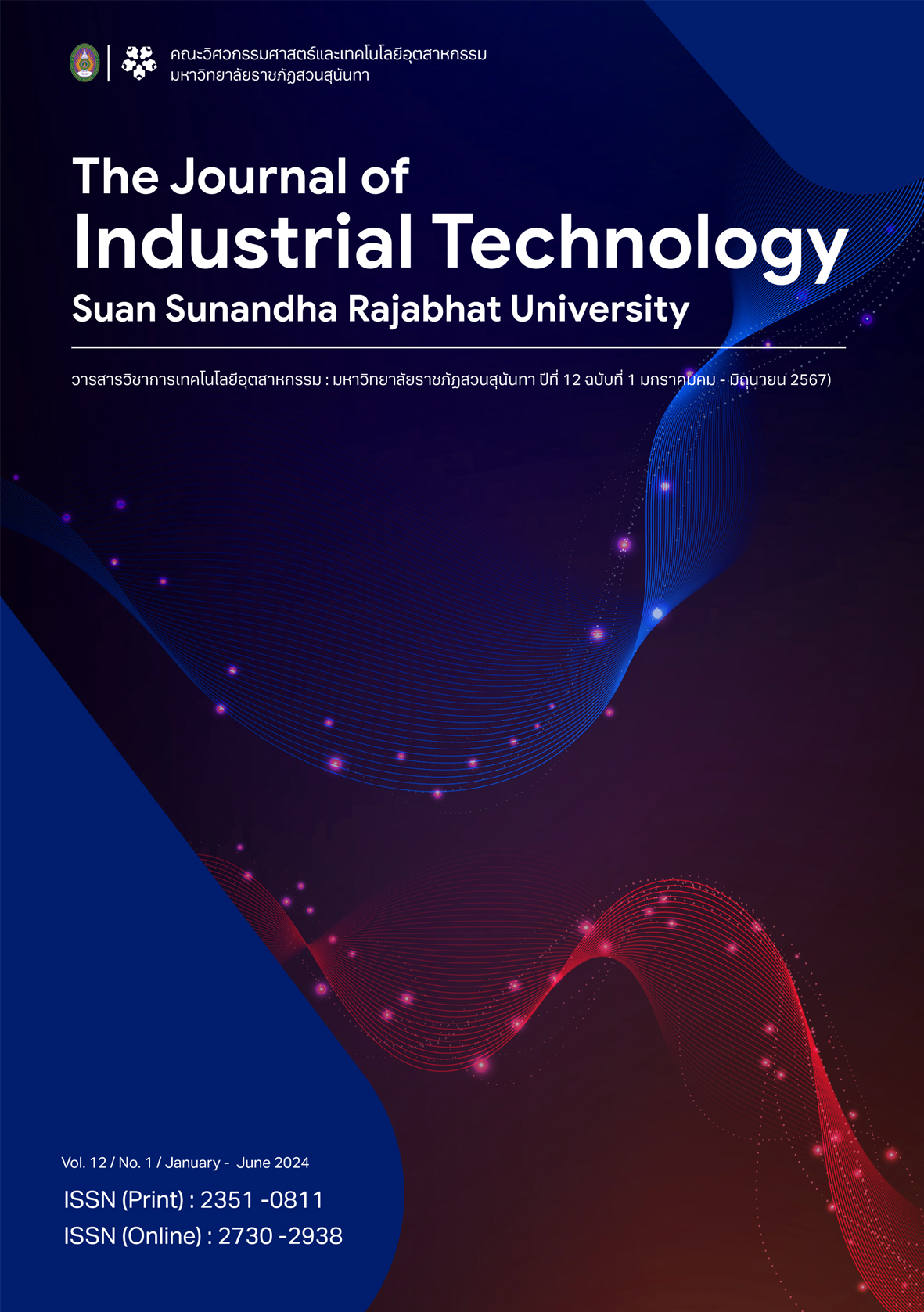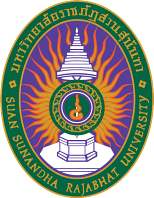Study of Factors Affecting Quenching of High-Speed Steel M2
คำสำคัญ:
quenching, heat recovery, high speed steelบทคัดย่อ
The objective of this research was to study the factors in the Quenching process that affects the hardness and structure of the metal. With hardening and tempering the material at different temperatures and times. The material used in the experiment was High Speed Steel M2. The agent used to harden the metal were water, oil, and air. The experimental factors consisted of temperature for Quenching which was divided into 7 levels, namely, 1,000 ºC, 1,050 ºC, 1,100 ºC, 1,150 ºC, 1,200 ºC, 1,250 ºC and 1,300 ºC. The time required for quenching was 3 minutes, 3.5 minutes, 4 minutes, 4.5 minutes, 5 minutes, 5.5 minutes and 6 minutes. Based on the experimental study, it was found that temperature and time have a significant effect on the hardness of High-Speed Steel M2 at the significant level of 0.05. The most suitable factor is the use of an oil-based Coolant at a temperature of 1,150 ºC for 4.5 minutes which gives the highest hardness than other Coolant with the hardness of 55.62 HRC and a martensite interior structure
เอกสารอ้างอิง
S. Manu, “Engineering Institute of Thailand under Royal Patronage Steel,” 7th ed. Bangkok: Chulalongkorn University Press, 2000.
S. Kriangkrai, “A Study of Factors Affecting the Surface Roughness of Hard Turning for SCM 415 Steel with Carbine Cutting Tool Coated CVD,” Master’s degree (Industrial Education and Tecnology), King Mongkut's University of Technology Thonburi, 2008.
S. Steel. Sahaviriya, 2019, “Steel Industries Public Company Limited,” [Online]. http://www.ssi-steel.com/index.php/about-ssi/product-process/service-center/beneficial-information/other-properties-of-hot-rolled-steel/heat-treatment-properties.
C. Wichan, “The heat treatment of metals by heating,” Rajamangala Institute of Technology Bangkok Technical Campus, pp. 25-27, 2013.
J. Bundit, “Physical Metallurgy. Structure of Metais and Phase Phase Transformation,” Physical Metallurgy, Bangkok: Topaz Publishing, 1994.
W.Saharat, “Hardening parameter analysis of high speed steel for end mill wear resistance property improvements,” King Mongkut's University of Technology North Bangkok, 1998. [Online]. https://tdc.thailis.or.th/tdc/search_result php
P. Kitisak, “Statistics Engineering Hypothesis,” The Japan-Thailand Economic Cooperration Society, Bangkok: Topaz Publishing, 1997.
W. Saharat, “Hardening parameter analysis of high speed steel for end mill wear resistance property improvements,” Master’s degree (Production Engineering), King Mongkut's Institute of Technology North Bangkok, 1998.
N. Prapasri, & J. Pongchana, “Design and Analysis of Experiments,” Bangkok: Topaz Publishing, [Online]. Available: https://tdc.thailis.or.th/tdc/search_resultphp, 2008
P. Somsak, “Effects of tempering temperature on wear resistance and toughness properties of cold work tool steels,” Master’s degree (Production Engineering), King Mongkut's Institute of Technology North Bangkok, 1999.
S. Potjanee, “Effect of heat treatment parameters on case hardening depth for motorcycle's roller chain using the factorial design of experiments,” 2023, pp.168-173.
J. Pimnada, “Reducing Proportion of Non-conforming Products in Heat Treatment Process,” Master’s degree (Field of Study Industrial and Manufacturing Systems Engineering), King Mongkut's University of Technology Thonburi, 2022.
P. Wichai, “The Application of hard film coating for extension tool life on inclined punch in the trimming process,” Journal Rajamangala University of Technology Phranakhon, Vol. 16, No. 1 pp. 28-40, Jan-June 2022.
ดาวน์โหลด
เผยแพร่แล้ว
รูปแบบการอ้างอิง
ฉบับ
ประเภทบทความ
สัญญาอนุญาต
ลิขสิทธิ์ (c) 2024 คณะวิศวกรรมศาสตร์และเทคโนโลยีอุตสาหกรรม มหาวิทยาลัยราชภัฎสวนสุนันทา

อนุญาตภายใต้เงื่อนไข Creative Commons Attribution-NonCommercial-NoDerivatives 4.0 International License.
บทความที่ได้รับการตีพิมพ์เป็นลิขสิทธิ์ของคณะวิศวกรรมศาสตร์และเทคโนโลยีอุตสาหกรรม มหาวิทยาลัยราชภัฎสวนสุนันทา
ข้อความที่ปรากฏในบทความแต่ละเรื่องในวารสารวิชาการเล่มนี้เป็นความคิดเห็นส่วนตัวของผู้เขียนแต่ละท่านไม่เกี่ยวข้องกับมหาวิทยาลัยราชภัฎสวนสุนันทา และคณาจารย์ท่านอื่นๆในมหาวิทยาลัยฯ แต่อย่างใด ความรับผิดชอบองค์ประกอบทั้งหมดของบทความแต่ละเรื่องเป็นของผู้เขียนแต่ละท่าน หากมีความผิดพลาดใดๆ ผู้เขียนแต่ละท่านจะรับผิดชอบบทความของตนเองแต่ผู้เดียว








